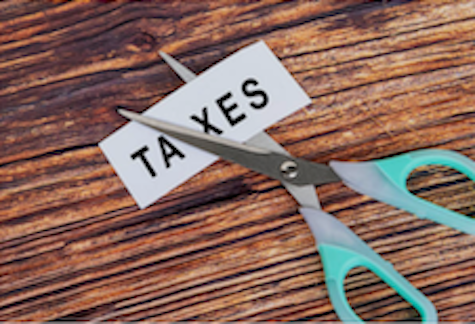
.
Tim Miller, technical and education manager for Smarter SMSF, said “the stars are aligning”, especially for SMSF members reaching their preservation age of 60 if they can use the stage 3 tax cuts to their advantage.
“From 1 July 2024 we have a preservation age of 60, and what comes with a preservation age of 60 is the capacity to look at and identify strategies such as transition to retirement income streams, and more importantly, non-assessable non-exempt income,” Miller said.
“When we focus on things like the stage three tax cuts, what we want to be able to do is to identify strategies that are utilised within the SMSF and then a broader superannuation environment and see how we can benefit.”
Miller said the most important thing to understand about the transition to retirement income streams is that money is coming out of the super environment as non-assessable non-exempt income, which can be capitalised on through bracket creep, for example.
“Higher income earners are potentially going to also have significant superannuation balances already and it provides us with an opportunity of looking at those that are currently sitting in that 30 per cent bracket and identifying what opportunities might exist for them,” Miller said.
He added that TRIS fell out of favour after 2017 because of the loss of the asset test exemption, and before 2017 contributions cap was $35,000 for people approaching preservation age. That was cut back to $25,000 and has slowly increased, so next year that cap will be $30,000.
“Linking that with the concessional catch-up, or unused concessional contributions, there is going to be a lot of people in the 30 per cent tax bracket who have either close to $500,000 or significantly less than $500,000 in superannuation, and even at preservation age may be able to utilise and benefit from the combined superannuation strategy and the lower tax environment,” Miller said.
“Looking ahead at a 2024-25 contribution strategy, we have a member earning $100,000 with a $420,000 total super balance at 30 June 2024, if they haven’t used all of their concessional contributions since 2018-19, they can make a bigger contribution noting that the five-year rolling period means that any unused amount from 2018-19 would now be lost.
“If we look at this employee who has only been getting their super guarantee rate along the way, effectively at the end of the 2023-24 year, they're going to have cap space of $85,670 based on the numbers.”
However, he said if a salary sacrifice and TRIS strategy were implemented, the employee could get significant tax benefits.
“This person with an income of $100,000 would pay around $21,000 in tax excluding Medicare, giving them around $79,000 take-home pay. They have a concessional cap in the 2024-25 year when we add the additional $30,000 of approximately $115,000. The super guarantee is going to be $11,500,” Miller said.
“In a non-salary sacrifice environment, we've got $11,500 going in and a $1,700 tax liability inside the super fund, which gives the combined entities over tax liability of $22,500, appreciating the super fund is unlikely to pay 15 per cent subject to its investments.”
He continued that it results in a take-home pay of $79,000 and a closing super balance of around $430,000.
If the member has just turned 60 and has $420,000 in their super balance, they can start a transition to retirement income.
“They can effectively bring themselves back from a 30 per cent tax bracket to a 16 per cent tax bracket and take their salary down to $45,000, bringing their personal tax from 20 down to four gives them a take-home pay of $40,000,” he said.
“They also have the expanded concessional cap and as they have $115,000 available to them, they can avail themselves to a $55,000 salary sacrifice arrangement, which will increase the tax on the contributions to just shy of $10,000.”
However, Miller said that also means the combined tax liability is 14 per cent versus 22 per cent and taking 10 per cent from the TRIS takes $42,000 out of the superannuation fund that is non-assessable non-exempt income.
“The fund still pays 15 per cent, but the member ends up taking home $3,500 more, the super balance with that additional contribution less tax is $434,500, meaning super has gone up by $5,000,” he said.
“They’re better off in the super fund, in their personal take-home pay, and in tax saving overall. Ultimately, in this scenario, even for those in the lower end of the 30 per cent tax bracket, a salary sacrifice arrangement is going to put them in a 16 per cent maximum tax environment. This is one of the areas that people need to be talking to their clients about to ensure that they've got the best income balance to suit their needs.”
Keeli Cambourne
May 23 2024
smsfadviser.com
23rd-June-2024 | 
